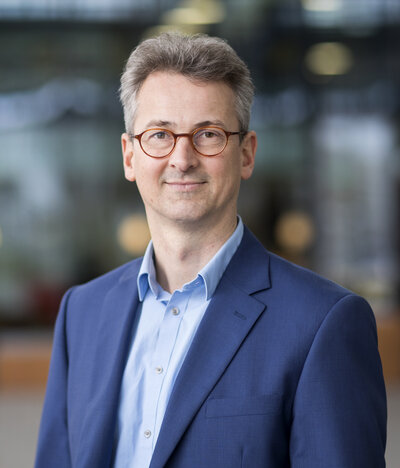Jeroen van Oijen
Department / Institute
Group

RESEARCH PROFILE
Jeroen van Oijen is Full Professor in the Power & Flow group at the department of Mechanical Engineering of the Eindhoven University of Technology (TU/e). He is a specialist in theoretical and numerical modelling of combustion. His expertise is largely in the field of engines and energy converters and his teaching focuses on mechanical engineering, chemically reacting flows, modelling combustion and interfacial transport phenomena in engineering flows.
Jeroen van Oijen employs advanced numerical models to unravel the fundamental processes in reacting flows and uses this knowledge to develop computationally efficient models for large-scale simulations of real devices. He is the inventor of the well-known Flamelet-Generated Manifold (FGM) method, which enables the use of detailed reaction mechanisms in engineering simulations at affordable computational cost. His group aims to develop new models for the design of devices employing new combustion concepts and future sustainable fuels.
The energy transition requires the development of clean and efficient conversion devices for alternative carbon-free fuels and energy carriers. Numerical models play a major role in the design process of such devices.”
ACADEMIC BACKGROUND
Jeroen van Oijen received his MSc in Applied Physics from TU/e in 1996. His thesis concerned the numerical simulation of the advection of passive tracers in two-dimensional flows. Following this, Jeroen became a PhD student at TU/e. He began working as postdoctoral researcher on the numerical simulation of turbulent flames using advanced flamelet models. Jeroen is known for developing the Flamelet-Generated Manifold (FGM) method, a scientific breakthrough in the field of combustion modelling.
In 2003 he was a visiting scientist in the group of Prof. Peters, the Institute für Technische Mechanik at RWTH Aachen. He has been visiting professor at Stanford University, CA, in 2010, and at the University of California Berkeley, CA, in 2014.
Jeroen is Fellow of The Combustion Institute and has co-authored over 100 journal papers. He was chairman of the Dutch Association for Flame Research and coordinator of several national and international research projects on development of reduced models for turbulent combustion and emissions. His models are used for the design of clean and efficient engines, boilers, furnaces and gas turbine combustors.
Key Publications
-
J.A. Oijen, van,L.P.H. Goey, de
Modelling of premixed laminar flames using flamelet-generated manifolds
Combustion Science and Technology (2000) -
J.A. van Oijen,L.P.H. de Goey
Modeling of complex premixed burner systems by using flamelet-generated manifolds
Combustion and Flame (2001) -
A.W. Vreman,B.A. Albrecht,J.A. Oijen, van,L.P.H. Goey, de,R.J.M. Bastiaans
Premixed and non-premixed generated manifolds in large-eddy simulation of Sandia flame D and F
Combustion and Flame (2008) -
J.A. Oijen, van
Direct numerical simulation of autoigniting mixing layers in MILD combustion
Proceedings of the Combustion Institute (2013) -
J.A. van Oijen,A. Donini,R.J.M. Bastiaans,J.H.M. ten Thije Boonkkamp,L.P.H. de Goey
State-of-the-art in premixed combustion modeling using flamelet generated manifolds
Progress in Energy and Combustion Science (2016)
Ancillary Activities
- Associate editor, Proceedings of the Combustion Institute